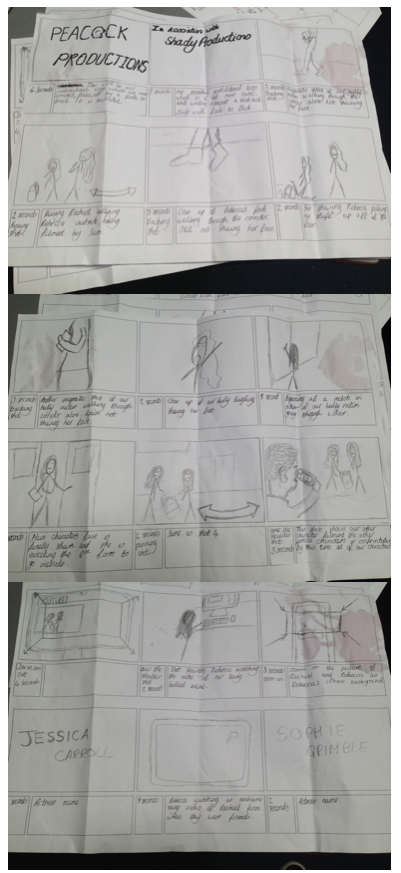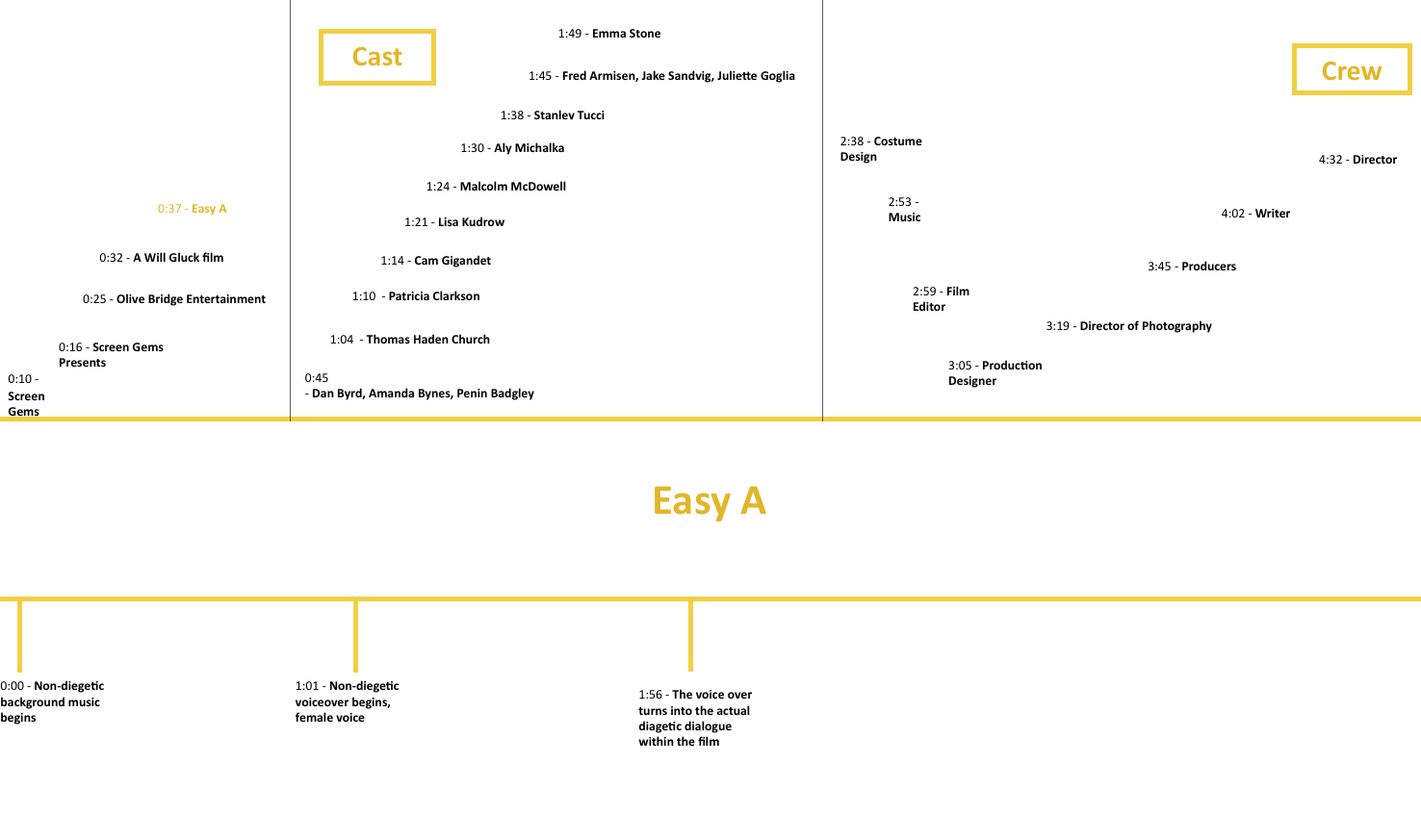In terms of comparing our two tasks, it is clear that both our editing and camerawork have hugely improved by the time we made our final task. This could be attributed to the fact that we had better equipment to work with (a HD camera as opposed to a camcorder). This said, the much more coherent product which was our final piece came because we were given time to practise our techniques in both filming and editing, and this is evident from looking at certain aspects of our two films.
The Planning Stage
 Most of the difference between the two tasks came from the huge amount of planning which I put into my final piece. This began with the analysis of several other film openings from a wide range of genres - this is what taught me what is included in a film opening, the order in which titles run, and gave me a rough idea of a suitable length for the opening. After this I spent time analysing film openings which other AS media students had made, in order to get an idea of the quality which my opening would have to be at. I did my own research into things such as the effect of certification, audience theories, and made questionnaires in order to find out what my
Most of the difference between the two tasks came from the huge amount of planning which I put into my final piece. This began with the analysis of several other film openings from a wide range of genres - this is what taught me what is included in a film opening, the order in which titles run, and gave me a rough idea of a suitable length for the opening. After this I spent time analysing film openings which other AS media students had made, in order to get an idea of the quality which my opening would have to be at. I did my own research into things such as the effect of certification, audience theories, and made questionnaires in order to find out what my audience would want to see within a film opening. After this, the process of actually planning the film began - we planned it through producing three separate storyboards - an initial hand drawn one, a photographic one, and an animatic one. By planning this out, we knew the exact shots, with angles and movement included, so we were able to draw up a shot list to ensure that we filmed everything which needed filming. Additionally, this helped us to edit our film in to a much more cohesive product, because we knew exactly how each shot needed to go into the next, and how long each title would remain on the screen for.
In addition to this, we spent much more time filming, which resulted in us filming each individual clip three times. This meant that during the editing stage, we had much more footage to choose from, so that if one clip wasn't up to scratch, we could just replace it with another take of the same clip - it was a much more efficient way of managing time, because it meant that there was no need to do any reshooting. We wanted to make sure of this because reshooting was a big problem for the preliminary task, because it meant that different costumes are being worn at the beginning compared to the end of the clip.
Equipment
 |
| Developing our iMovie skills allowed us too experiment with the font and colour of our titles - this had not been available to us when filming our preliminary task. |
Match on Action
We included a match on action in our final piece in the same way that we included it in the preliminary - through the use of a door being opened. However, it looks much better in the final film, because we chose better angles to capture the shots from, had more time to film it, and had much more experience when we came to editing it. The most notable difference between the two different uses of match on action is the smoothness which is evident in the final film - this is because it doesn't contain a jump cut straight afterwards, which is what makes it look like more realistic continuity editing.
  |
| Whilst the match on action in the preliminary was good, the jump cut straight after it was very unrealistic. |
 |
| This was completely different in our final film, because the match on action was fast and looked incredibly realistic - it is a good example of continuous editing |
180 Degree Rule
I believe that we adhered to the 180 degree rule much better in our final piece than we did in our preliminary film. This is because during the bedroom shots, we ensured that the camera always stayed one side of the girl, to make sure that it didn't cross the imaginary line which would break the rule. This is a contrast to our preliminary task, because we moved the camera about too many times in order to stick to the rule whilst filming it - this means that the audience would find it difficult to judge where each character is in relation to the others, because the side they are being filmed from would be constantly changing. As you can see in the screenshots below, the 180 degree rule was adhered too in our final piece, which we strived to do after obviously breaking it during the preliminary task.
I believe that our end product has been very successful in filling the assigned task, which was to create a two minute film opening. Whilst it is nothing groundbreaking, it includes a variety of professional looking shots and uses of editing, meaning that it does fulfil this role adequately. It also contains titles which run in the order which they do in the majority of other film openings, which helps to show how the product is successful compared to the openings of other films. Whilst there are some parts of our end product which were not successful at fulfilling this role, for example the narrative which would be tough to develop into a full length feature film, I think that our end product was a massive step up from our preliminary task, and so does successfully fulfil its role of being a coherent and enjoyable film opening.

































